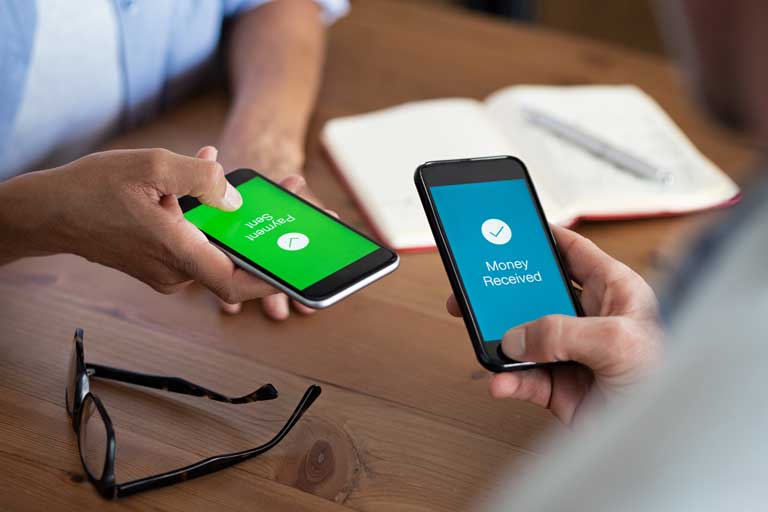In the first quarter of 2022, Apple, Visa, Discover, and other major payment industry players began heavily marketing the newest innovation for payment technology. Tap-to-mobile payments are set to revolutionize the payments industry ecosystem.
Tap-to-mobile will enhance and complement the robust suite of payment solutions that payment providers and app developers offer to their merchants. This new payment technology will empower merchants to seamlessly accept contactless payments right on their commercial mobile phones or tablets. Helping them to grow a successful and modern business.
With seamless and convenient ingenuity, this new payment acceptance capability will quite possibly forever change the way all merchants take payments in the near future. Let’s dive a little deeper to explore this new technology. We will see why merchants and consumers have so much excitement surrounding its arrival.
The Evolution Of Mobile Payment Technology
Over the years, technology continues to develop. The evolution of the payment processing industry never ceases. With this continued development, consumers have been able to make payments through their phones for years with no problem. And merchants have even been able to accept payments through their phones as well.
So, you might be asking, what is the distinction? How does tap-on-mobile differ from tap-to-pay? How are mobile payments different from tap-on-mobile payments?
Consumers Using Their Mobile Phones To Pay
Tap to pay is another way of saying “contactless payments.” When consumers hover their smartphone or smartwatch over a card reader, they are not actually physically tapping their device on anything. They simply wave their NFC-enabled device over another NFC-enabled device for 1 second and the transaction is complete. There is no contact made.
In the past, the device that was taking the payment would have been an NFC-enabled card reader or terminal. However, with tap-to-mobile, the device that is facilitating tap-to-pay transactions is a merchant’s mobile phone alone. Thus, tap-to-pay has transitioned to tap-to-mobile.
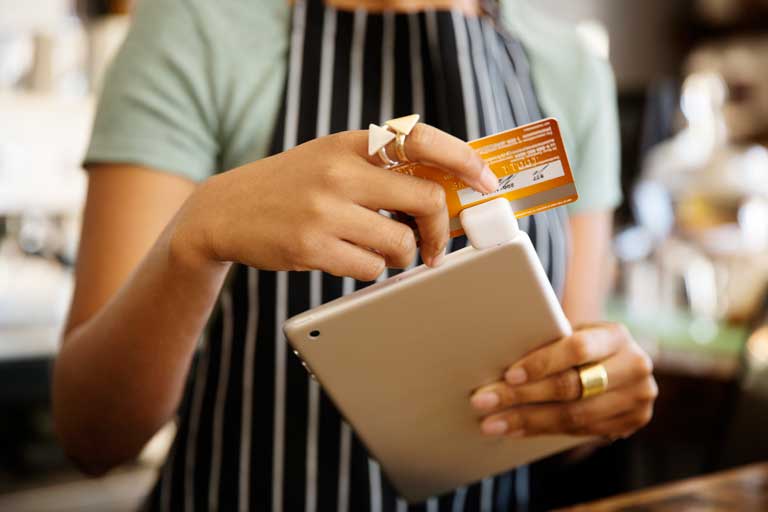
Merchants Accepting Payment From Their Mobile Devices
Merchants have been able to accept payment without a physical terminal for years. So let’s clarify a bit as to why tap-to-mobile is a new innovation. In the past, to accept payment from a smartphone or tablet, consumers could provide payment information in one of two ways:
- Through a third-party digital wallet like Paypal or Zelle. Meaning a consumer’s bank account and routing number issue a transaction electronically from one mobile device to another.
- Swiping or dipping their credit card into a merchant’s mobile phone by way of a mobile card reader accessory such as:
- Clover Go
- Square Reader
- National Bankcard’s MobilePay
- PayPal 4029USRTAM
- Ingenico G5X
- EPN Pro
- MagTek iDynamo
- ID Tech UniMag
The list goes on…
Regardless, there was never a way for a merchant to simply open their phone, launch an app, and take a contactless credit card payment on the go, with no additional equipment. The seamless efficiency is what makes tap-to-mobile payment technology so advanced.
What Is Tap-To-Mobile Payment?
Contactless payments are a global favorite when it comes to transaction convenience. Contactless payments are quick and easy. Their growing popularity has been increasing since 2020.
However, tap-to-mobile takes contactless transactions to a whole new level. It is a payment solution technology designed to instantly turn a smartphone or even a tablet into a merchant’s contactless point-of-sale (POS) device.
By tapping a customer’s contactless card, mobile phone, or watch on a merchant’s smartphone or tablet, a contactless transaction is completed instantaneously. There is no additional equipment required. A transaction simply needs 2 mobile smart devices enabled with near-field communication (NFC) technology.
Tap-to-mobile payment is new, and thus still making its name known. Various names can be used to refer to it:
- Tap-to-mobile
- Tap-to-phone
- Tap-on-mobile
- Tap-on-phone
No matter what you call it, the idea is the same. A consumer can “tap” their contactless card or mobile wallet on a merchant’s mobile phone or smart device to complete payment.
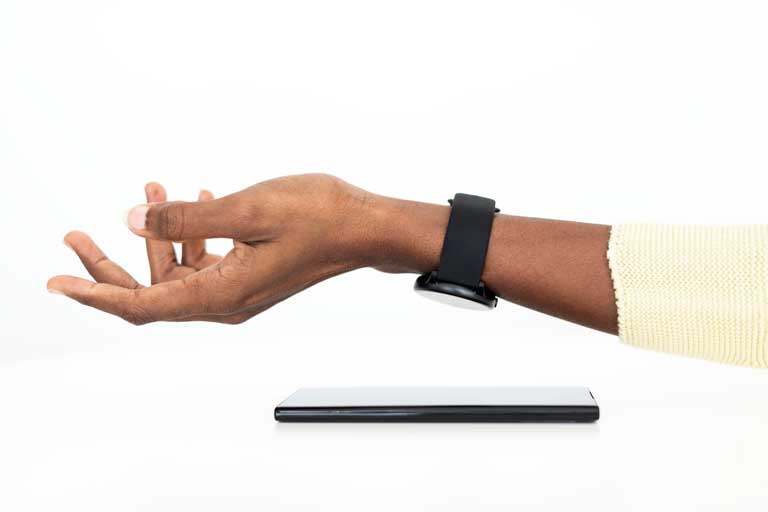
How Does Tap-To-Mobile Payment Work?
With tap-to-phone payments, millions of businesses will enhance their in-person commerce experience. They can offer their customers a fast and secure checkout all with a device that’s already in everyone’s pockets. To start using tap-to-mobile, micro-merchants, and small business owners need only to do a few short steps:
- Apply (and be approved) to process electronic payments with an approved payment processor that offers tap-on-mobile payments.
- Download the tap-to-mobile application on a commercial smartphone or smart device. This can be an Apple iPhone/iPad or an Android smartphone/tablet. The application will be specific to the merchant’s payment processor.
- Once connected with an approved vendor, the phone will automatically receive its tap-to-mobile provisioning credentials.
- The merchant then enters the payment amount into the tap-to-mobile app.
- At checkout, the merchant will prompt their customer to hold their contactless card, smartphone, or smartwatch over the merchant’s smartphone or tablet.
- Through NFC technology, the card information is securely transmitted by Apple Pay, Google Pay, or Samsung Pay on the customer’s mobile wallet.
Tap to pay will work with all contactless credit card networks, including Visa, Mastercard, American Express, and Discover. - In an instant, the purchase is complete!
- Lastly, the merchant can then send the customer a digital receipt via email or text message. If the customer chooses to receive a physical receipt, the merchant can print one using an external printer if they have one readily available.
Who Benefits From Tap-To-Mobile Payments?
Phone companies like Apple and Android are working in collaboration with app developers, payment platforms, and payment networks. Their mission is to make it easier than ever for businesses of all sizes — solopreneurs, micro-merchants, small businesses, and large retailers — to seamlessly accept contactless payments right from their smartphones. No additional equipment is needed. Every business, no matter the size, can take advantage of the latest in payment technology.
Moreover, there is a market for tap-to-mobile cutting-edge technology, especially among small businesses. Micro-merchants – small businesses of 10 employees or less– represent about 40% of the gross domestic product in the United States. Unfortunately, 90% of these small businesses don’t accept digital payments of any kind.
However, if tap-to-phone payments become widely available, it would be the most practical way to empower these small businesses to easily accept digital payments. 95% of surveyed small business owners said they might consider implementing tap-to-mobile payments. In fact, 92% of cash-only small businesses agreed.
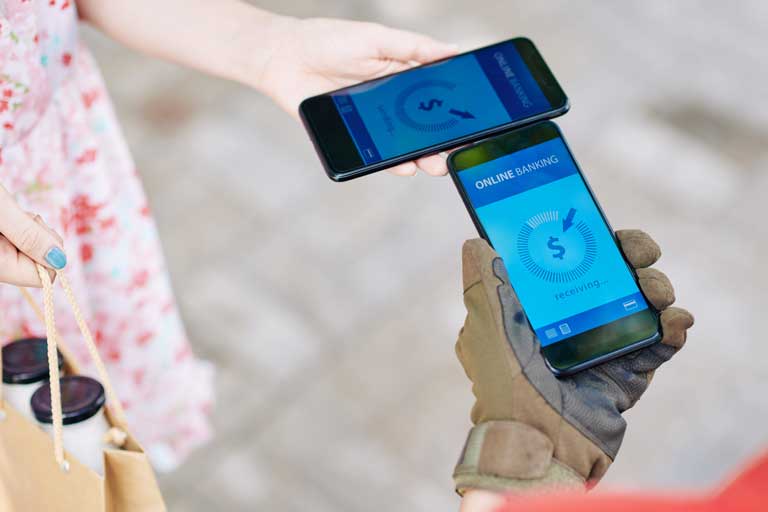
What are the Benefits Of Tap-To-Mobile Payments?
Survey results have established the top 6 factors that would influence a small business owner’s decision to offer tap-to-phone payments:
Cost Of Tap-To-Mobile
Surveyed small business owners agreed the top benefit of tap-to-mobile payments is the minimal financial commitment. Tap-to-pay even saves costs on previously necessary technology, equipment, maintenance, and training.
With tap-to-pay software, additional hardware costs will no longer be barriers for small business owners and micro-merchants looking to build their businesses. There is no additional equipment needed. Merchants can say “goodbye” to the leasing and purchasing fees of clunky terminals, mobile payment accessories, and large POS devices.
Tap-to-mobile platforms operate on smartphones. These are devices that most people already own. The downloaded app would be through the merchant’s supporting payment processor, in which the fee for the app may be minimal or already included in their processing fees.
Moreover, some POS technology and payment terminal equipment are not very user-friendly. It takes management staff time and resources to continually train employees on how to use their payment devices.
Convenience Of Tap-To-Mobile
In many opinions, the real winner of tap-on-mobile technology is its simplistic approach and speedy delivery. For both merchants and their customers.
Merchants are provided with the convenience of being able to take their business anywhere. Tap-and-go mobile payments allow merchants to sell their goods or services wherever they have a cellular or Wi-Fi connection. These could be farmers’ markets, pop-up shops, delivery services, food trucks, in-home and remote services, and yes, even conventional brick-and-mortar.
For the 80% of consumers who are already using contactless payments, incorporating tap-to-mobile in their transactions will have zero effect on them! The convenience is absolute. Rather than taping their smartphone or smartwatch on a contactless card terminal, they would simply tap it on a mobile phone or tablet instead.
Customer Demand For Tap-To-Mobile
Consumers show interest in tap-to-mobile payments due to their convenient and speedy nature. Though customers aren’t necessarily demanding new payment technology, 83% of surveyed consumers said if it were offered by a business, they would use tap-to-mobile payment.
In fact, 85% of consumers would be more likely to choose to shop at a business that offers tap-to-phone payment technology. With more consumers agreeing on seeking out convenience when they shop, continued upgrades in a business’s payment technology are sure to win new loyalties.
Beating out your competitors because you offer the latest in payment technology is a sure reason for any small business owner to adapt.
Tap-To-Mobile Security Features
Privacy is fundamental. With tap-to-pay, customers’ payment data is protected by the same technology as traditional contactless payments. All tap-to-mobile transactions are secured with the same tokenization and encryption technology that previous chip cards and contactless solutions offered. This means mobile wallet companies like Apple or Google, don’t know who is making a purchase and what they are buying.
Additionally, merchants would still be using a payment processor to accept these types of transactions and thus must adhere to the card brand rules. This includes maintaining PCI DSS compliance. Failure to do so will lead to hefty fees and the possibility of merchant account closure.
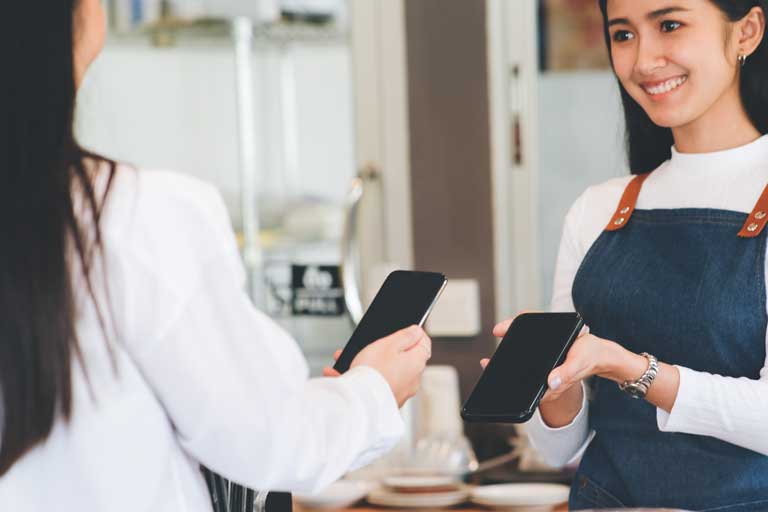
Upward Trend Toward Contactless Innovation Appreciation
Roughly 70% of US businesses offer contactless payment solutions. However, only just over half of the American population (51%) takes advantage of contactless payments. This is much lower than the global contactless payment adoption of 81%.
Contactless payment methods have been adopted slower in the US compared to other markets such as Europe and Canada. In fact, 19% of Americans had only made a contactless payment for the first time starting in 2020.
Despite the slower trend toward contactless adoption in America, nearly 70% of consumers who have used contactless payment methods say they will continue to use them for future purchases after the pandemic. This is widely due to their pure and inevitable convenience factor.
Contactless users have become spoiled and expect businesses to offer efficient and seamless transactional experiences. Businesses that choose to continue to adopt innovative digital payment solutions will attract and maintain loyal customers.
As a result, the arrival of tap-to-phone technology will create exciting new revenue opportunities for small businesses in an ever-evolving market landscape.
Back-Up Features
On occasion, a merchant’s primary transaction system may go down or become inoperable. Additionally, merchants may work at remote locations from time to time. Being able to offer tap-to-mobile for consumers in these instances provides valuable backup features to keep businesses running smoothly and keep customers happy.

Concerns With Tap-To-Mobile Payment
As exciting and innovative as tap-on-mobile may seem, with any new technology, there are concerns. Tap-to-mobile has a few barriers it might need to overcome to become a widely accepted payment method in the future. These barriers may present themselves from merchants, consumers, and even technological boundaries.
Here are some of the most significant obstacles:
Marketing
With any new technology, many people might not know of its existence. Merchants and consumers need to be made more aware of the newest innovation of tap-to-mobile payment solutions. This can be done through:
- Increasing marketing strategies from payment processors, card brands, and smartphone companies
- Articles like this one can be shared online to provide further educational insight
- Powerful word-of-mouth conversations
Contactless Payment Growth
The US market needs to continue its contactless payment adoption growth. Both merchants and consumers have a ways to go before we become a cashless society. Below are a few things that must be done to further contactless payments in the US.
- Consumers need to become more comfortable using their smartphones and smart watches’ mobile wallet technology to pay for transactions.
- Merchants need to better advertise their contactless payment options to their customers. This will then prepare clients for a future mobile payment, tap on the phone option.
- Micro merchants need to be educated on how to feel comfortable looking into a payment processor. They need to feel confident going from cash and check only, to accepting digital payments. From there, they can easily adopt tap-to-phone payments. They do not need to worry about setting up a bunch of costly and unnecessary card processing equipment. Additionally, this would need to be done with a payment processor that offers tap-to-mobile services.
More Payment Processors Need To Incorporate Tap-On-Mobile Technology
Currently, only a handful of payment providers have been able to integrate tap-on-mobile payments into their solutions library. Though it makes them great competitors in the industry, it has its drawbacks when attempting to increase global tap-on-mobile usage.
Businesses that already process digital payments are unlikely to switch to payment providers who do offer this technology solely to enable tap-on-mobile solutions. It can be more of an inconvenience than a convenience at this point in time. Realistically, most businesses may wait until their existing processor offers it. If this is the case, more payment processors need to begin integrating these services into their repertoire. However, this may be a lengthy process.
Technology Barriers
Currently, tap-on-mobile payments are only available on more recently upgraded mobile devices. Because of this, merchants will need to have newer models of mobile phones and tablets. For example, tap-to-mobile technology will only operate on current-generation Android devices and on an iPhone XS or newer.
Safety And Security Concerns
To negate reluctance, consumers need to feel comfortable knowing the new tap-to-mobile payments are just as secure as previous dedicated card readers and terminals.
For PIN debit cards, consumers will have to be made aware that entering their PIN is a secure and hygienic process. Some may feel uncomfortable entering PIN information on a cell phone or touching the merchant’s cell phone to enter it.
All new technology comes with barriers. These are simply due to the fact that the public is not yet educated on all features of the newest innovations.
However, the reality is that tap-to-mobile features will increase a polished point-of-sale experience for both merchants and consumers in a remarkable way. This fact alone will likely be a compelling incentive to overcome the possible foreseen barriers to widespread use.

Tap-To-Mobile’s Future
More consumers are using tap-to-pay with their digital wallets and contactless credit cards. As a result, tap-to-mobile payment solutions will provide millions of merchants and their customers in the US with a seamless and secure way to accept contactless payments. They will unlock a new checkout experience using the power and convenience of their mobile devices.
Merchants who opt to use the latest payment technology innovations will be sure to outsmart their competition. They will create further commerce opportunities and secure new loyal customers who will appreciate the modern and convenient features provided to them at the point of sale.
To contact sales, click HERE. And to learn more about ECS Contactless Payments visit Contactless.
